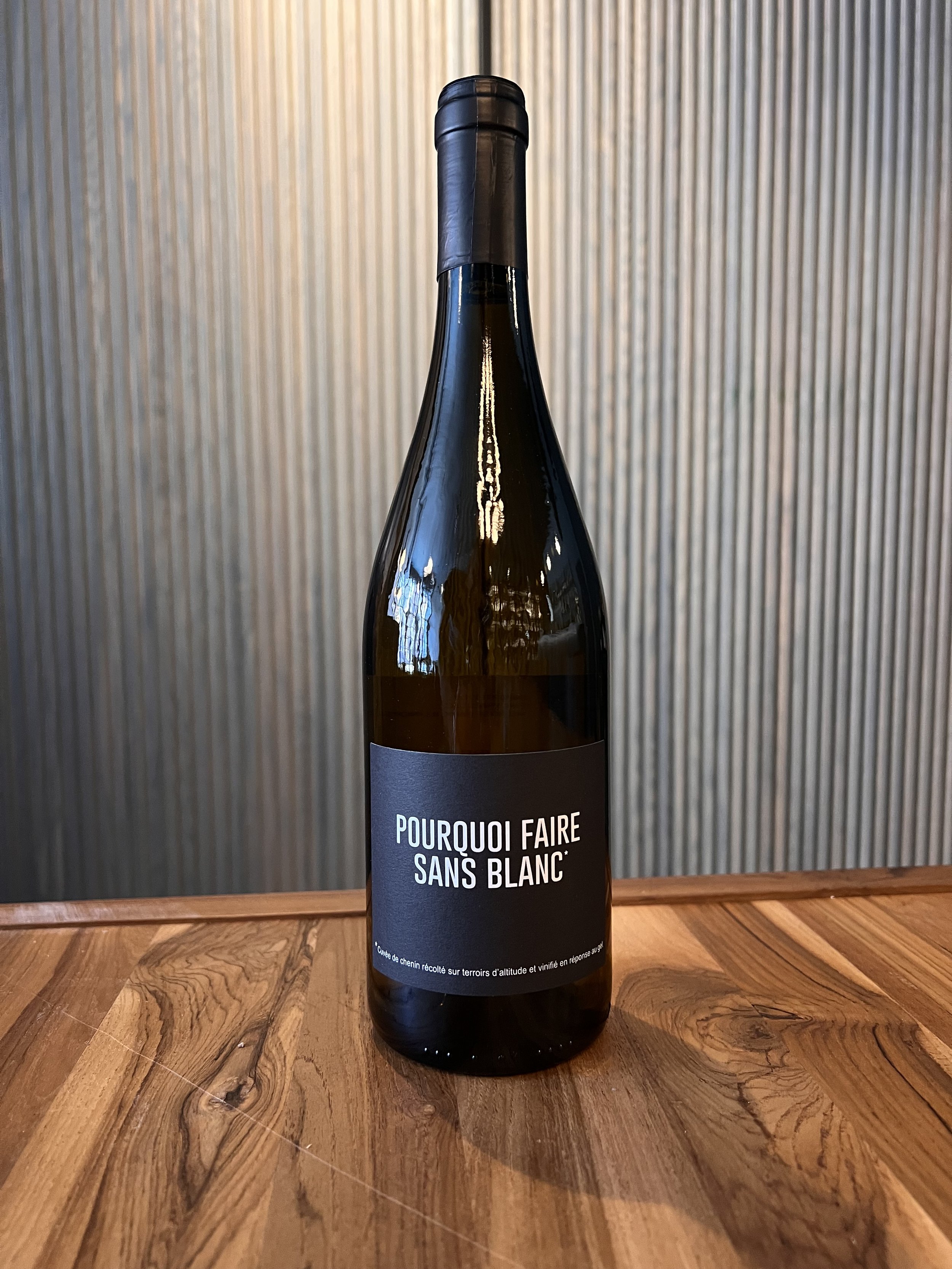Domaine Sérol “Pourquoi Faire Sans Blanc”
VIN DE FRANCE , France | 2021
The life of a grower and winemaker is pretty glamorous right? You’ve all seen the front cover of Wine Spectator, the owners, a happy couple dressed in plaid, strolling through the vineyard on a sunny day with their well-groomed dog, equally enjoying the moment.
What you don’t see in that picture is the family who depends on the weather to cooperate in order for them to make a living. The challenges of global warming wreaking havoc on the vineyards.
What has always been inspiring to us in the wine trade is to see the vigneron meet these challenges, most often with a great attitude and “just do it” mindset.
Such is the case with this inspiring wine from Domaine Sérol.
Located in the Côte Roannaise, this 32 hectare property has been led by Stéphane Sérol since 1996. He has helped grow the health of his vineyards, working organically at first, but now employing mainly biodynamic viticulture. The Côte Roannaise is at the tail end of the Loire Valley, close to the city of Roanne. It is a small appellation, granted AOC status in 1994. There is a combination of volcanic rich soil, along with sand, and granite. It is a place well suited to growing Gamay Noir.
The Sérol family also works with Chenin Blanc, a favorite Loire varietal, but taking on a very different profile in the Côte Roannaise.
In 2021, frost virtually wiped out the entire production at Domaine Sérol. As they have noted, it was the worst year of their life as winemakers. Hearing their plight, they connected with friends in the industry who were able to sell them some grapes so that they could make wine.
Pourquoi faire sans blanc or “Why do without white?” is a wine made entirely from organically farmed Chenin Blanc from grape growing friends in Limoux. The high altitude vineyards produce exceptionally fresh Chenin. The grapes were vinified at Domaine Sérol, with vinification in 500 liter barrels and cement tank. Aged on its fine lees for 6 months before bottling.
Exceptionally vibrant, with beautiful floral and citrus tones. This is ideal as an apéro, but can also work with very simple fish preparations.

